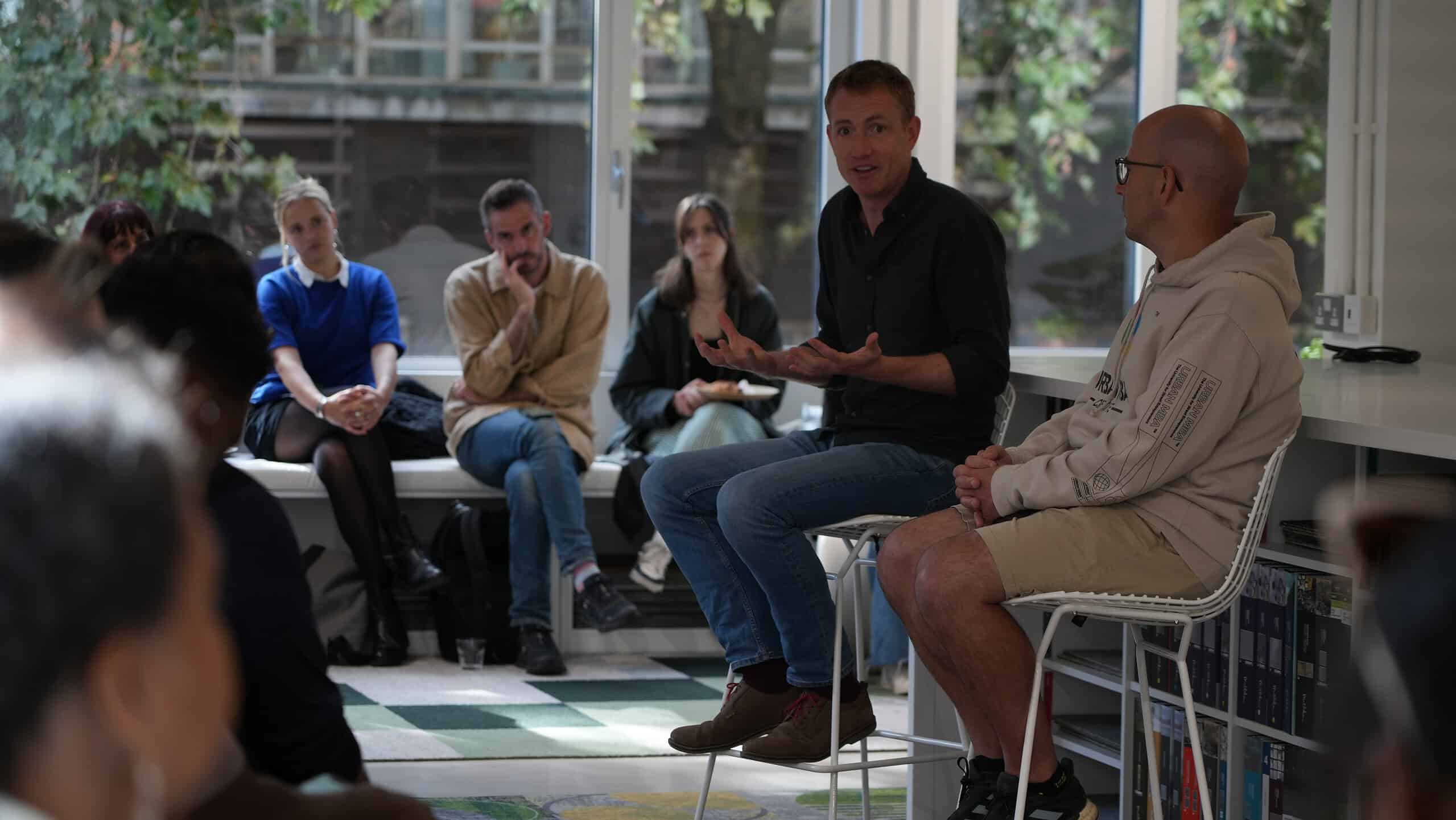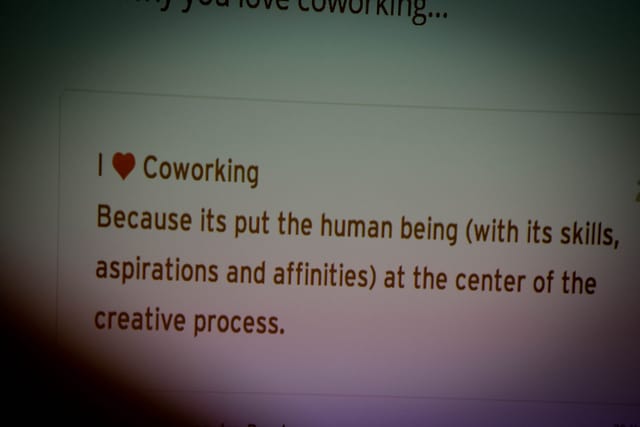
In today’s coworking community, spaces aren’t just about having a desk—they’re about community, inclusivity, and generating real connections.
But so many people are still getting it wrong, falling into common traps that limit the effectiveness of their spaces and events.
Here are seven things to avoid and practical steps to help build better coworking spaces and communities—because community is the key!
Don’t Ignore the Voices of Your Community
What to do instead: Could you co-create your space with the community?
Vanessa Sans co-founded Kalima Beach Life Coliving & Work Café
in Caldes d’Estrac, just outside Barcelona, in January 2024.
As one of Europe’s most experienced coworking voices, Vanessa knew that the best way to make her coworking and co-living space resonate with locals and international visitors was to involve the community from day one.
Instead of going alone, she invited digital nomads, remote workers, and local residents to a day-long workshop.
Together, they co-created the values, philosophy, and tone of voice for Kalima – Coliving | Work Café.
As Vanessa Sans puts it:
We designed the values of the brand, developed the philosophy, the tone of voice, and the foundation that would guide the brand designer to rebrand Kalima. It was a collaborative process that brought together the local and international community, giving them ownership and a sense of belonging in the space.
This collaborative approach gave Kalima – Coliving | Work Café a strong foundation and ensured the community felt deeply connected to the space. The brand became theirs.
This is one of the most valuable lessons in coworking:
- Don’t assume you know what your members want.
- Could you get them involved, gather feedback, and allow them to be part of the creation process?
When people help shape the space, it reflects their needs, values, and culture, creating a deeper bond between them and the space.
This is the heart of community-driven coworking.
All photos shot at Milliken Floors Europe by Aashika Mamgain for the London Coworking Assembly and Urban MBA

Don’t Let Events Be Too Formal
What to do instead: Break formalities to allow for natural connections.
At our London Coworking Assembly events, we ensure plenty of time for people to connect during scheduled sessions and in between them.
We leave room for informal conversations, and one of our best decisions was to split events into 45-minute ‘walk and talk’ between venues.
This walk allows people to connect naturally, have deeper conversations, and exchange ideas freely.
When it comes down to it, people crave real human connections.
I experienced my first Research Group For Collaborative Spaces Symposium in London in 2015, led by Adèle Gruen and Stefan Haefliger.
It is amazing how a walk and conversation during an event gets that spark of connection.
Post-COVID, no one wants more star speakers, panels that have paid to be on stage and event content that could have been a blog, podcast or YouTube video.
It’s the coworking value of collaboration and + a growth mindset.
Fixed mindset = Must look smart.
Growth mindset = Must learn and share.
Simple connection and organic interaction are worth so much more.
Curate Your Crowd: Stop Inviting People to Fill Seats
What to do instead: Curate your guest list to ensure meaningful connections.
Author Jim Collins talks about getting the right people on the bus, and that principle is especially true for coworking events.
At the London Coworking Assembly, we’ve grown our community by deliberately inviting people who are actively building coworking spaces of all shapes and sizes and working on neighbourhood-level economic and community development—the ones doing the work at street level.
Instead of just filling the room, we focus on getting people who can connect meaningfully and contribute to the discussion.
Often, these aren’t the “coworking rock stars” you see on LinkedIn.
They are the individuals who are making significant changes within their neighbourhood and city.
The result of the event?
Deeper, unexpected conversations that go well beyond the usual sponsored coworking marketing and real estate talks.
Don’t Overlook Accessibility and Neurodiversity
What to do instead: Design spaces with diverse needs in mind.
In the past five years, there’s been more conversation about accessibility and neurodiversity in coworking, and it’s about time.
One major issue is that many spaces prioritise looking cool over being functional.
Acoustics and lighting are essential yet often neglected.
As someone with dyslexia and ADHD, I know firsthand how stressful it is to try to work in a space that doesn’t support focus.
Only recently have I learned to choose workspaces based on how they make me feel rather than how they look.
A perfect example is Fento Coworking in Vigo, Galicia, where I found a home.
The space uses wood, plants, carpet, and calming colours, creating an environment that makes it easy to sit down, focus, and get to work.
In a Coworking Values Podcast with Martin Sibley from Purple Goat Agency, we discussed a coworking space that was physically accessible but had no community.
Another space had an incredible community but wasn’t accessible – listen to our conversation here.
True accessibility isn’t just physical—it’s about creating an inclusive, welcoming atmosphere.
You can follow the ‘Accessibility Track’ with Emily Breder er and Nook Wellness Pods on the Coworking Values Podcast – here.
We’ll run another London Coworking Assembly workshop with 360 Workplace at the Workspace Design Show London2025.

Don’t Forget the Local Perspective
What to do instead: Pay attention to the local community and its needs.
Coworking spaces that succeed go beyond just opening their doors.
They understand that a space should reflect the local community’s unique identity and needs.
I’ve seen too many coworking spaces land like an alien spaceship in neighbourhoods, often one of the first moves of the gentrification process.
At our recent London Coworking Assembly event led by Citizens Author Jon Alexander, Jamie Dundas from The Good Space Company and Chauntelle from Town Square Islington highlighted this line below as part of their group feedback:
“Reflect your neighbourhood.”
When you do, you’ll feel like a natural part of the community—one created with and for its residents.
When you invite locals in, as Vanessa Sans did, you involve them in shaping the space and listen to their needs.
Your coworking space becomes more than just a workplace; it becomes a vital part of the neighbourhood’s social fabric.
The next wave of ‘coworking brands’, like Patch, ARC Club , Oru Space, and TownSq , are doing critical and delicate work to connect and understand the neighbourhoods and high streets they will be part of.
Sadly, other coworking and flexible office space brands are opening in neighbourhoods like Death Star coworking spaces.
They act like colonising big-brand supermarkets, ready to establish dominance and eliminate the competition with their cookie-cutter formula.
Please collaborate with local communities to set up thoughtful coworking spaces that always serve as workspaces and centres of connection and regional development.
- European Coworking Day in May 2025 is a great way to make this happen.
Follow along over the next few months as the London Coworking Assembly works to connect like-minded London coworking communities and raise awareness of coworking spaces as essential neighbourhood hubs.

Don’t Overload the Space with Features
What to do instead: Focus on what your community actually needs.
Loading up your space with gadgets and gizmos screams insecurity.
When I worked in a Five-Star Hotel, we folded the toilet paper into little Vs in all the bathrooms.
But this did not matter if we were not in tune with our guests’ stated and unexpressed needs.
Given the choice of everything being on time and a decent coffee, none of our guests gave a shit about the little V’s on the end of the toilet paper.
People want places that work, not spaces that try too hard.
The more features you add, the harder it is to maintain and the more confusing it is for members.
People don’t buy features—they buy benefits.
Advertising and copywriting legend David Ogilvy popularised this concept.
In his book Confessions of an Advertising Man (1963), David emphasised that what matters most is not a laundry list of features but what those features do for the customer.
Coworking is not about having a pile of bullshit ‘bro features’ like ping-pong tables; it’s about creating a space that helps people work better and connect more deeply.
Bloated features will feel distasteful in our challenging economic climate, where budgets are tighter, and people are more honest about what they can afford.
Flashy extras don’t matter if they don’t add real value.
I’d like you to focus on making your space where members feel they are getting tangible benefits that improve their work lives.
During the pandemic, many spaces overloaded with features crumbled while those with solid communities flourished.

Don’t Underestimate the Power of Rituals
What to do instead: Build community through regular, meaningful interactions.
Building a community is like cooking a good meal—you don’t need fancy ingredients, just the basics done right.
At the Creator Write Club at Creative Works Space, we’ve seen how sitting down to write together can make a huge difference.
People come in, share their work, write for two hours, and then discuss their accomplishments.
It’s not just about accountability—it’s about feeling like you’re part of a creative community.
Similarly, regular shared meals in coworking spaces can be mighty.
I remember the Thursday lunches at Mainyard Studios in Mile End.
Natasha Nicholls would cook memorable vegan and vegetarian meals and unite the community.
Those lunches became the week’s cornerstone, where people connected, shared stories, and built relationships that shaped the community.
Further Reading/Practical Steps:
- Co-create with your community: Host a feedback session to understand what your members want. Let them have a say in the design and amenities.
- Start small with accessibility: Focus on basics like acoustics, lighting, or creating quiet zones to make the space more inclusive for neurodivergent individuals.
- Cut unnecessary features: Evaluate underused features in your space. Focus on what helps your members work productively, and cut out the gimmicks.
- You can set up a weekly ritual: Introduce a simple, consistent ritual to generate connection at a shared meal or a structured session like the Creator Write Club.

